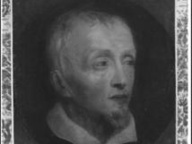Giovanni Battista Piazzetta
Venezia 1683 - Venezia 1754

Figlio di Giacomo, scultore e intagliatore in legno, fu allievo di Antonio Molinari. A vent'anni compie un viaggio a Bologna che si rivelerà fondamentale per la propria formazione artistica: qui conosce l'opera di Giuseppe Maria Crespi e probabilmente entra nella sua bottega nel 1703. Torna a Venezia nel 1711: ingrandisce la propria bottega e fonda nel 1750 quella che poi divenne l'Accademia di pittura. Tra i massimi esponenti della corrente patetico-chiaroscurale, incentrata sui forti contrasti di luce e ombra e sull'intensa drammaticità delle figure, influenzò profondamente la cultura veneziana del Settecento: fornì innumerevoli spunti per la ricerca di temi plastici e fu tra gli ispiratori del Tiepolo. Importante fu l'attività di disegnatore e illustratore librario, che gli vale oggi il riconoscimento come maggior disegnatore settecentesco. La forza grafica dei suoi dipinti garantirà una solida base formale ai pittori della scuola veneziana, tra cui il Tiepolo stesso. Nonostante l'attività accademica e il riconoscimento pubblico, morirà in povertà e solitudine. Tra le opere ricordiamo San Giacomo condotto al martirio (Chiesa di San Stae, Venezia), nella quale è già evidente la ricerca di plasticità, la Gloria di San Domenico (Basilica dei Santi Giovanni e Paolo, Venezia), in cui mette a frutto tutte le tecniche prospettiche apprese a Bologna, l'Assunta (Louvre, Parigi), che sviluppa il tema decorativo e la Visione dei Santi Ludovico Bertrando, Vincenzo Ferrer e Giacinto (Chiesa dei Gesuati, Venezia), ritenuto il suo capolavoro.



